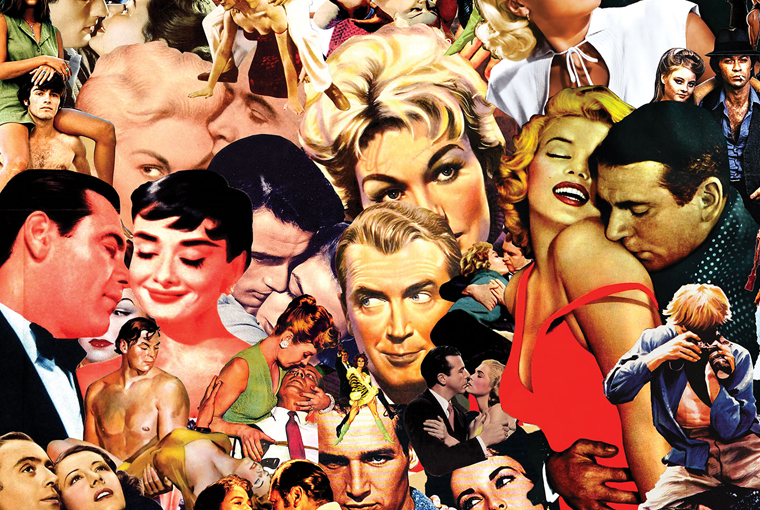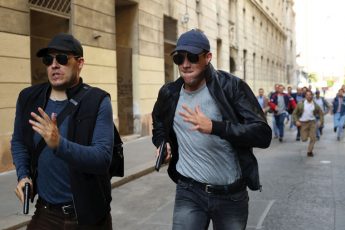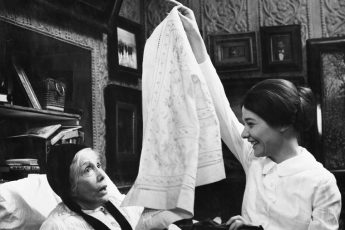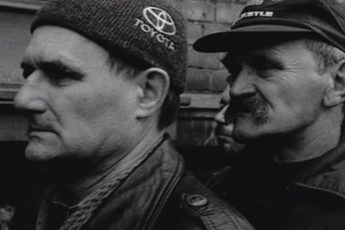Boys & Girls
György Pálfi’s Final Cut – Ladies & Gentlemen (2012)
Vol. 31 (July 2013) by Konstanty Kuzma
Never thought Marcello Mastroianni, Greta Garbo, Audrey Hepburn, Jackie Chan, Shah Rukh Khan and the blue, fictitious aboriginies from Avatar would wind up in a single film, in turn directed by a Festival de Cannes regular? As always, György Pálfi is good for a surprise. By editing together snippets from (literally) hundreds of films, the Hungarian director has created a collage-homage to cinema without himself directing a single frame. While he appears to have respected a 15 second time barrier which technically allows the free reuse of unacquired material (Palfi cites all films in the marathon title screen), Ladies & Gentlemen is facing copyright problems which restrict it from being freely screened. Luckily, a look at the 15-second trailer reveals how – working with a fake shot-reverse-shot technique – Pálfi ties frame to frame, cleverly leaping from one cinematic era to the other. First, an obsoletely handsome Gérard Depardieu (in Bernardo Bertolucci’s 1900) glances down at the floor, when a mere 2 seconds later Pálfi cuts to a view of Sharon Stone’s legs (Paul Verhoeven’s Basic Instinct), and next, the gazer (in this film, usually the man), now in the form of Norman Bates (Anthony Perkins in Alfred Hitchcock’s Psycho), raises his head with what seems like a sexually assaultive expression. Finally, Brigitte Helm, as Evil Maria, raises her right eyebrow in the famous frontal shot from Fritz Lang’s Metropolis: “what’s next?”, she appears to be asking.
As state-funding in Hungary went on a year-long hiatus due to a contentious restructuring of the national film fund, Palfi reassigned some left-over budget from his previous project to produce Ladies & Gentlemen, thus cleverly bypassing the state-ordered furlough. Given the circumstances, Palfi’s persistence is admirable, and it is doubtful whether one should expect more from a director working with an improvised budget. Still, when taken as such, the film would hardly be of value if its citations didn’t remind us of the greatest moments of cinema, and the emotions we associate with them. The piece “recycles” in that it reuses original material, but its own originality is questionable. The problem is not, as some may suggest, the lack of original material, but its generally uniform synthesis. The changing filmic origin of the images, which slows down the film significantly, serves as a justification for endless sequences in which nothing significant happens: the unusual combination of foreign material is deemed sufficient to sate the viewer’s visual curiosity. True for some viewers, the success of this approach is surely linked to the degree to which they can identify themselves with nostalgic cinéphilia. Ladies & Gentlemen is rarely objective proof of editing proficiency, and yet a sobering reminder that stylistic virtuosity alone won’t make a film complete: the sluggish “boy meets girl” narrative (which we follow from first kiss to sex, marriage, everyday life, jealousy, tragedy etc.) isn’t nearly as refreshing as it may sound; all too quickly, the viewer finds himself over-familarised with structure and pace, making the plot turns superfluous, if not fully predictable…
Trivially, Palfi has succeeded in finding a common theme in 450 films, but neither has his reductionist attitude revealed wherein lies the power of cinema, nor is it indicative of the individual title’s appeal. The latter flaw is less severe, because 15 seconds aren’t nearly enough to extract a film’s essence, and because Palfi has chosen widely known films that viewers will be familiar with. Hence, their artistic significance need not be elaborated. The former is, however, because this appears to be the main goal of Palfi’s homage. By reducing films to a uniform, Palfi fails to answer why we are still interested in telling and listening to the same sort of stories; where these stories differ; how they are narrated; why “cliché” is a derogeratory term. The answers, as Ladies & Gentlemen indicates, cannot be found in the common alone.




Leave a Comment